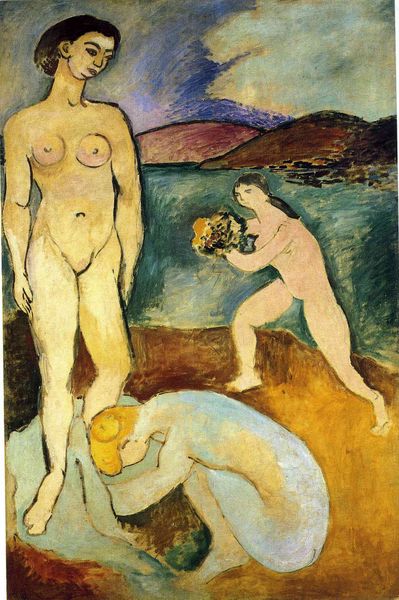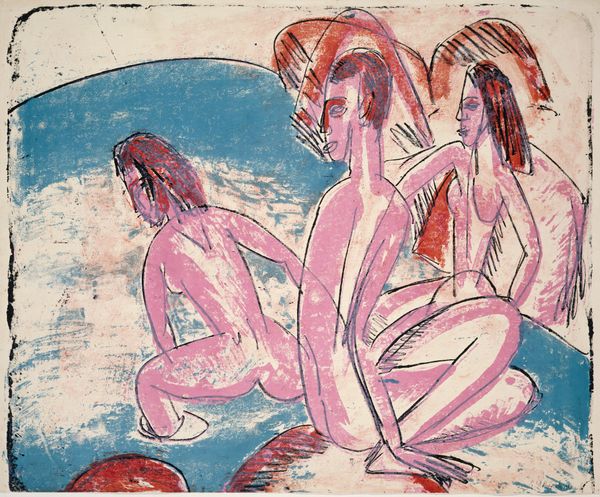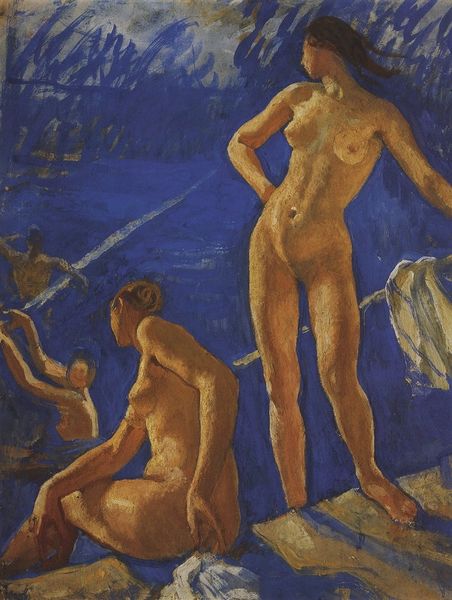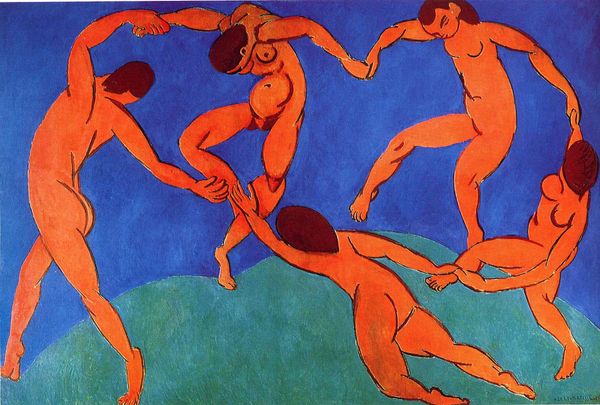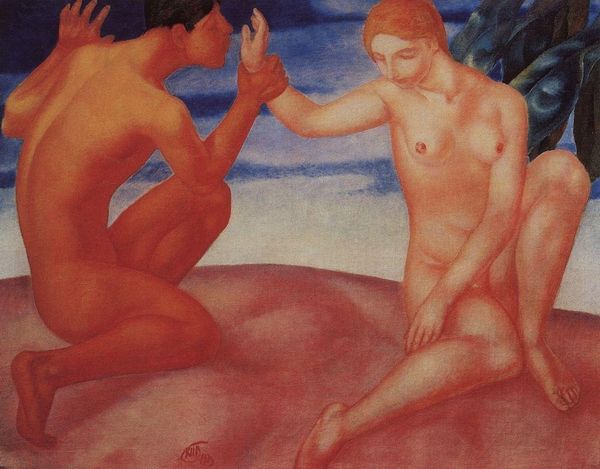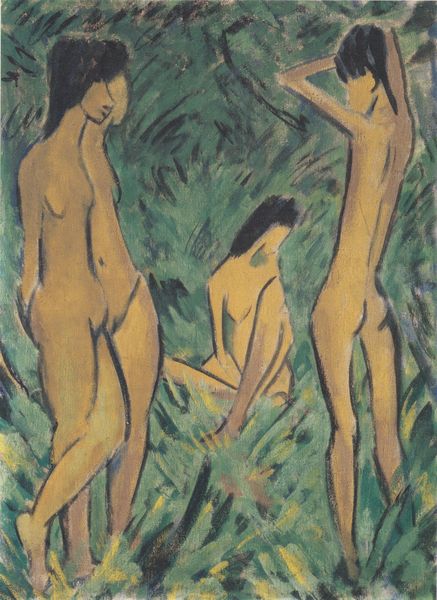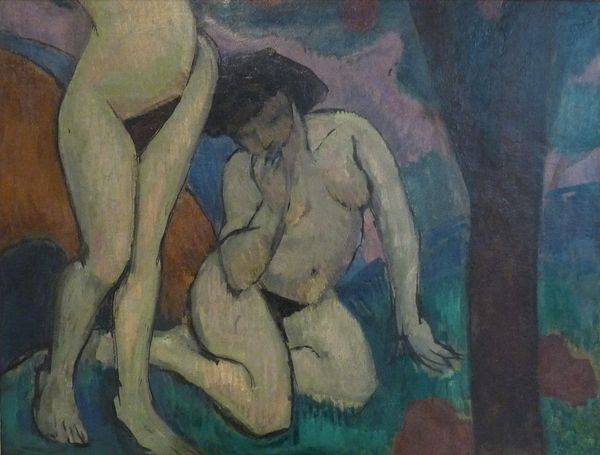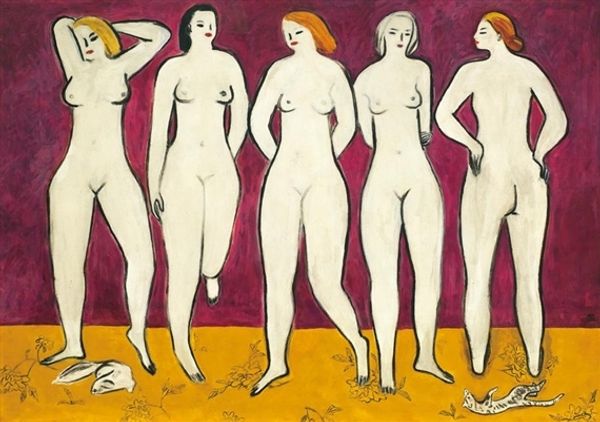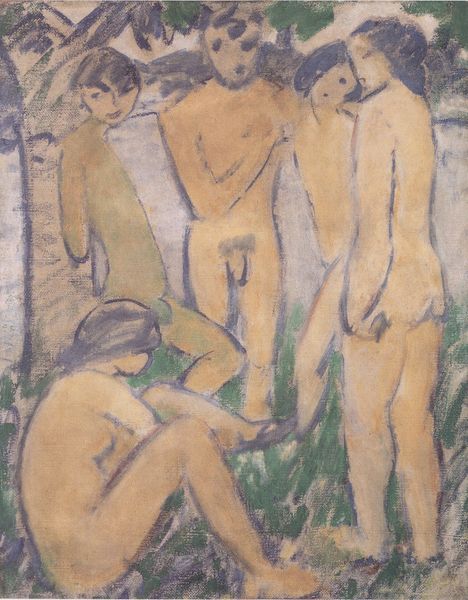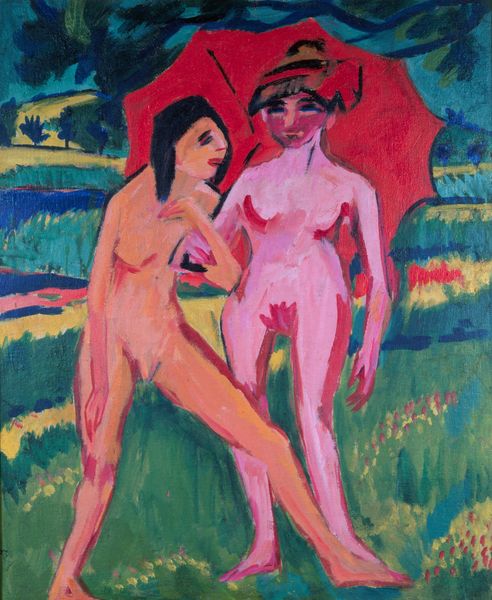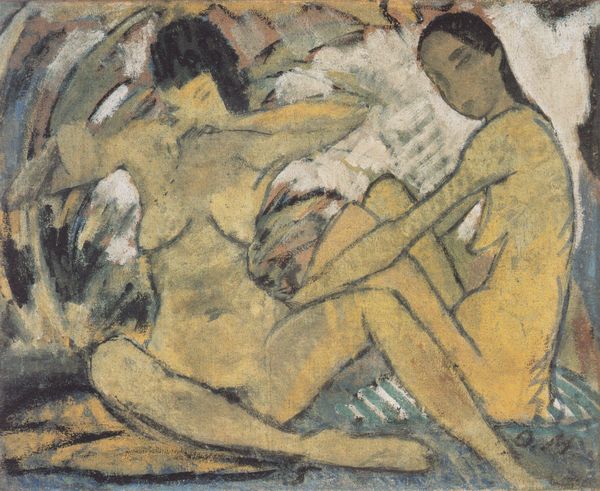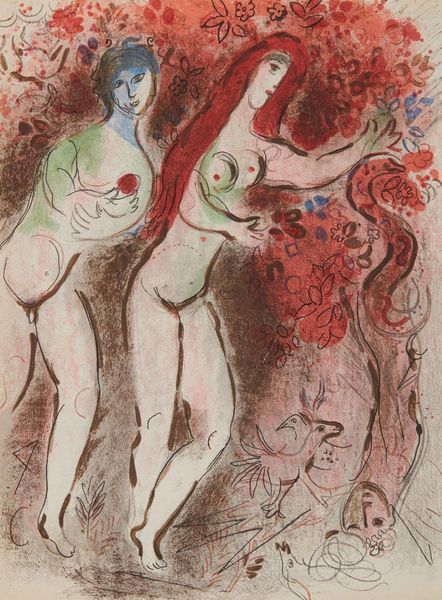
painting, acrylic-paint, impasto
#
fauvism
#
painting
#
landscape
#
acrylic-paint
#
figuration
#
impasto
#
nude
#
modernism
Copyright: Public domain US
Curator: We are looking at Henri Matisse’s “Le Luxe II”, created in 1907 using acrylic paint with an impasto technique. I’m immediately struck by how flattened the picture plane is. There’s almost no attempt to render depth. Curator: Absolutely, it's strikingly two-dimensional! But the scene feels pregnant with latent tensions, doesn't it? These abstracted female figures within what appears to be a domesticated landscape hint at complicated issues of female representation and leisure during the early 20th century. There is clearly a male gaze. Curator: Right, Matisse experiments radically with his chosen materials. Notice the bold applications of paint, building texture, but sacrificing detailed modeling. His interest lay more in the direct application and the inherent qualities of color, line and material. I find it fascinating how acrylic paint as a material lends itself to such bold strokes, almost liberating him from traditional oil painting techniques. Curator: I wonder if the artist considers the power dynamics inherent in portraying nude women in a landscape that hints at pastoral fantasies? Early 20th-century Fauvism, with its celebration of sensual color and flattened space, certainly challenges traditional representation. But at the same time, we have to acknowledge how easily these styles lent themselves to reinforcing dominant modes of looking. Curator: What strikes me is Matisse's process – the bold simplification of form and color that points toward an almost industrial process. Notice how the unprimed canvas shines through the thinly applied paint layers. It draws our attention to the painting’s physicality and suggests a departure from traditional painterly values and techniques that can be further linked to commercial aesthetics. Curator: I would further add the period saw massive socio-political changes; Matisse himself would have been a direct product of that change. “Le Luxe II” doesn’t exist in isolation; we can link it to colonial narratives where ideas of ‘exoticism’ and ‘femininity’ are manufactured, circulated and consumed. What appears as ‘aesthetic’ in fact operates within existing power dynamics that objectify women of colour. Curator: Seeing these nudes in landscape from this point of view is a great place to end our commentary. Curator: I agree, food for thought to us all.
Comments
No comments
Be the first to comment and join the conversation on the ultimate creative platform.
